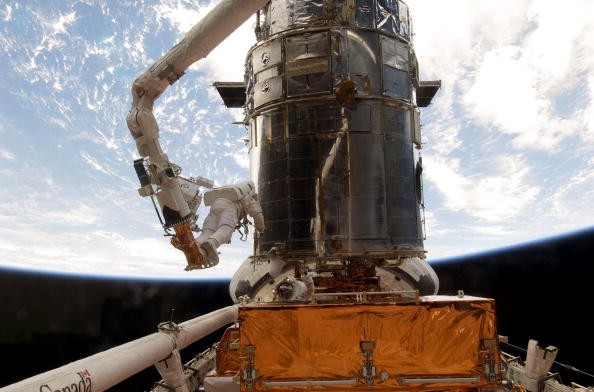
There is no denying that the Hubble Space Telescope is one of the most important instruments in modern astronomy. The telescope, which was launched into orbit 25 years, 8 months and 24 days ago, has been instrumental in many scientific breakthroughs including studies related to the expansion of the universe. To date, data obtained from the telescope has been cited in over 13,000 peer reviewed papers and it seems like the Hubble Space Telescope is not done providing a clearer glimpse into the vastness of the universe.
Late last week on January 15, 2016, NASA published a very clear image of a celestial object dubbed as NGC 2597. The NGC 2597, which is located 150 million light-years from Earth in the Crater constellation otherwise known as The Cup, is basically a collision of two galaxies. The snapshot is millions of years in the making as it usually takes a few millennia for such collision to take place.
"Because the time scales involved in the evolution of our universe are so huge, we do astronomy with snapshots like this image. By piecing together the many mergers we see throughout the universe, in very different stages -- and by modeling them in our computers -- we have managed to figure out how things work over most of cosmic time" explained Dr. Meg Urry, director of the Yale Center for Astronomy & Astrophysics, to The Huffington Post.
According to the statement released by NASA, more instances of galaxies colliding and forming a singular group have been observed as the universe ages and evolves. Initially the universe is mainly populated by young elliptical galaxies. Like the NGC 3597, most of these galaxies would be merging with other elliptical groups and would be forming dense globular clusters - which defined as large populations of celestial bodies packed with millions of stars.
View the image here.

